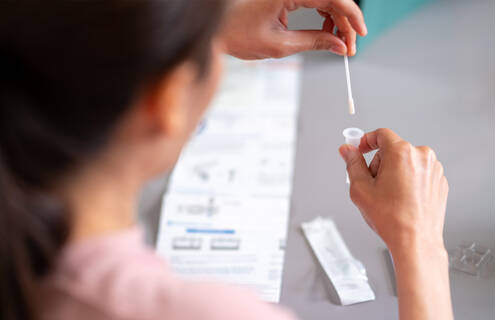
As we head into the colder months with more indoor gatherings, respiratory illnesses become more prevalent. Here’s what you should know in preparation.
When should you take an at-home COVID-19 or influenza test?
If you’re feeling sick with respiratory symptoms —such as fever, cough, sore throat, or a runny or stuffy nose—you may test for COVID-19 or influenza.
At-home tests for both viral diseases are available at most local pharmacies and online. These tests are reliable and convenient and can save you from scheduling an appointment with your provider simply for testing.
My first COVID-19 test came back negative. Do I need to retest?
If your first test is positive, you do not need to re-test for COVID-19. If your first test is negative and your symptoms persist or worsen, you can re-test in 24 to 48 hours, as viral levels may not have been high enough for the test to detect the virus yet.
What should you do if you test positive for COVID-19?
You can manage your symptoms at home with rest, fluids and taking over-the-counter medications, such as pain relievers, as needed.
You should contact your primary care provider if your symptoms are severe or you’re at higher risk for complications—those who are 65 and older, have chronic medical conditions, are pregnant or other reasons. Your provider may decide COVID-19 or flu medications are needed.
If you experience emergency symptoms such as trouble breathing, chest pain, confusion or inability to stay awake, bluish lips or face, or signs of dehydration, go to the Emergency Department or call 9-1-1.
Should you test before a gathering?
If you are sick, you may consider testing before a gathering to help protect others. Even if your test is negative, it’s safest to stay home until you’re feeling better or, if you must attend, wear a mask.
If you are not sick, routine testing before a gathering is not needed.
When should I wear a mask?
If you’re feeling sick with respiratory symptoms, you should wear a mask (covering mouth and nose) around others to help prevent spreading illness. Most people can stop masking when they’ve been fever-free for 24 hours and symptoms are improving.